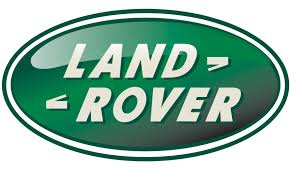Freelander Automatic Gearbox - JATCO: Description and Operation

AUTOMATIC GEARBOX - JATCO
44-42
DESCRIPTION AND OPERATION
CAN Inputs
l
Actual engine torque. This message from the ECM indicates the actual engine torque produced at any one time.
The EAT ECU uses this message to control gear shift scheduling.
l
Engine coolant temperature. This message from the ECM is used by the EAT ECU for OBD diagnostic functions
and to detect when the engine has completed a 'warm up' cycle.
l
Engine friction. This message from the ECM is the current frictional torque losses within the engine and is
expressed as a percentage of maximum engine torque. The EAT ECU uses this message to control gear shift
scheduling.
l
Engine speed. This message from the ECM is used by the EAT ECU to calculate gearbox oil pressure to assist
control of gear shift scheduling.
l
Engine speed signal error. This message from the ECM informs the EAT ECU if there is a fault with the engine
speed calculation. If necessary, the EAT ECU then adjusts gearbox operation to prevent possibility of mechanical
damage.
l
Engine torque error. This message from the ECM informs the EAT ECU that torque values received are incorrect
and there is an ECM torque measurement error.
l
Estimated engine torque This message from the ECM informs the EAT ECU of the level of torque that the engine
is producing. The EAT ECU uses this message to control gearshift scheduling.
l
Ignition switch status. This message from the ECM is produced when the ECM energises the main relay. The
EAT ECU uses this message to initiate the power-down routine at ignition off.
l
Actual engine torque. This message from the ECM is the theoretical engine torque for current throttle setting and
engine operating conditions. This is the same as the actual engine torque unless torque reduction in progress
and is expressed as a percentage of maximum engine torque. The EAT ECU uses this message to control gear
shift scheduling.
l
Throttle angle. This message from the ECM informs the EAT ECU of the throttle angle (driver demand). The EAT
ECU uses this message to control gear shift scheduling.
l
Torque reduction status. This message from the ECM informs the EAT ECU of the success of a torque reduction
request.
l
Engine MIL status. This message from the ECM indicates to the EAT ECU that the MIL has been illuminated by
the ECM. The EAT ECU will disable OBD fault monitoring.
l
Hill descent activity status. This message from the ABS ECU informs the EAT ECU that HDC has been
requested. Providing the selector lever is in position 1 or R, the EAT ECU enters HDC mode and assists the ABS
with engine braking.
CAN Outputs
l
Cooling request. Request for additional cooling of the transmission fluid. The ECM switches on, or increases the
speed of the cooling and, if fitted, condenser fans.
l
Current/Target gear. Informs the ECM what gear is currently engaged or, if a gear shift is in progress, the gear
to which the gearbox is shifting. Used by the ECM for engine load change prediction.
l
Gear selector lever position. The EAT ECU transmits a signal to the ECM of the gear selector lever position
selected by the driver. The ECM outputs a CAN message to the instrument pack to display the selection in the
LCD
l
Gear shift in progress. Informs the ECM when a gear shift is in progress. Used at idle speed to compensate for
engine load changes during the gear shift.
l
Gearbox fault status. The EAT ECU uses this signal to display the status of the EAT ECU. If a gearbox fault
occurs, the EAT ECU will generate this message to alternately display 'F' and '4' in the instrument pack LCD and
initiate the default strategy for the gearbox.
l
Torque reduction request. Requests the ECM to reduce engine torque for a gear shift (equivalent to lifting off the
throttle in manual gearbox models). Amount of torque reduction required expressed as a percentage of maximum
engine torque.
l
Gearbox MIL status. The EAT ECU transmits a signal to the ECM that there is a gearbox fault which will increase
emissions above an acceptable level. The ECM outputs a message to the instrument pack which illuminates the
MIL.
l
Gear shift mode. This signal is used to display the currently selected gearshift mode, drive, sport or manual, in
the instrument pack LCD. This signal is originated from the EAT ECU.
